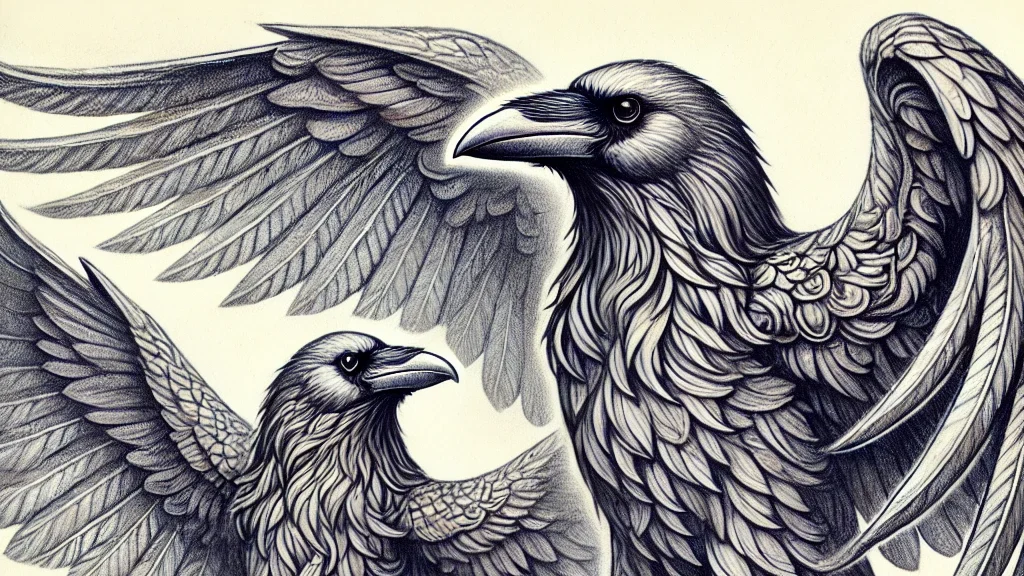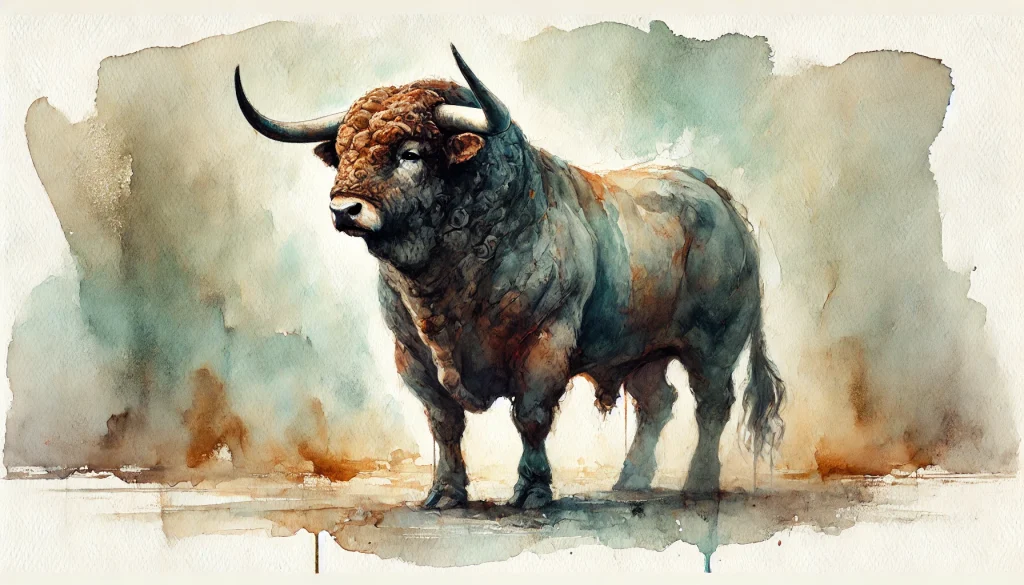If I were to ask anyone to name one of the Irish gods, almost certainly Morrigan would come at the top of their list. She’s probably one of the most iconic, symbolic, and empowering, of the ancient pantheon. And rightly so. Her image – both terrifying and awe-inspiring – has captivated generations, symbolizing the inexorable power of destiny and the cyclical nature of life and death. This ancient ‘fairy queen’ defies our modern fluffy portrayals fairies, presenting us with a profoundly complex, fearsome, and inspiring figure which formed a key part of pre-Christian Irish mythology.
But, while an inspiring figure, she’s often wildly misunderstood and represented today. The modern appropriation of her symbolism has, in many ways, distorted an even more compelling figure than contemporary culture would have you think.
The Crow of Battle
Lady Gregory – writing at the turn of the 20th century – has provided us with one of the best modern interpretations of ancient Irish myths.1 In this, she presents Morrigan as a formidable, shape‐shifting goddess whose appearance embodies both beauty and terror. Gregory refers to her as “the Crow of Battle,” directly linking her to carrion birds—a symbol of death and prophecy that hovers over the carnage of war.2 The crow, a bird observed scavenging on battlefields, serves as a living symbol of the inevitability of mortality and the capricious nature of fortune.
In Gregory’s account, this symbolism is vital: it underscores that the Morrigan, with all her fierce power, is an integral part of the divine order—a force that ensures that the balance between life and death is maintained. But this was not mere symbolism; for Morrigan was a shape-shifter, taking on the form of these birds or other creatures themselves.
“The…Morrigan, sometimes as a bird, and sometimes as a loathsome-looking hag, figures in all the ancient battles”.3
Joyce’s reference here illustrates that Morrigan was not confined to a single, human form; rather, she fluidly transforms into various animals, most notably into a crow. This ability to change shape reflects the ancient Celtic belief in the interconnectedness of the natural and supernatural realms, suggesting that her very nature is an expression of the unpredictable forces of fate. Such vivid imagery reinforces her dual role as both destroyer and guardian, an ever-present force ensuring the cyclical renewal of life through the inevitability of death.

Triumvirate of Goddesses
Some sources describe the Morrigan as a singular deity with three distinct aspects – sometimes identified as Badb, Macha, and Nemain.4 Each aspect represents different facets of warfare and fate: Badb is linked to the chaos of battle, Macha to sovereignty and endurance, and Nemain to the terror and fury of conflict. This tripartite form underscores the complexity of her character and her role in the cosmic balance between creation and destruction. Gregory’s account, however, makes clear that she viewed Morrigan (Morrigu) as a separate being worthy of mention in her own right with a whole chapter devoted to her exploits alone.
“And the greatest among their women were Badb, a battle goddess; and Macha, whose mast-feeding was the heads of men killed in battle; and the Morrigu, the Crow of Battle; and Eire and Fodla and Banba, daughters of the Dagda, that all three gave their names to Ireland afterwards.”5
Together these three goddesses are portrayed as fearsome and bloodthirsty, striking fear into the most battle-hardened of warriors. In this grouping, the Morrigan is both complementary and distinct. Whereas Badb is primarily seen as a harbinger of death and Macha is associated with the cyclical nature of battle through the grisly detail of “mast-feeding” on fallen warriors, Morrigan encapsulates both these aspects and adds her own nuance through her ability to change form and influence events on the battlefield. She provided a sense of foreboding, an omen of death itself; a symbolism which endures even to this day in the form of crows and ravens.
Role in Warfare and Fate
Morrigan was not merely a harbinger of doom; she is also took pleasure in shaping fate and causing chaos. As Gregory retells: “Morrigu used often to be meddling in Ireland in Cuchulain’s time, stirring up wars and quarrels.”6 This refers to the famed warrior hero Cuchulain of ancient Ulster (known then as Ulaid) who fought against the warriors of the rival kingdom of Connacht (known then as Ecmacht). This is the Irish epic of The Tain, a story worthy of many posts on its own. But for Morrigan’s part, she is depicted stirring up trouble, stealing cattle, and casting spells.
In reading several accounts of the Tain, it’s difficult to conclude the exact nature of Morrigan’s interest in Cuchulain, only that she appeared at various points seemingly to try to protect him. Some translations stay she loved him, appearing in the form of a beautiful woman. But, despite attempts to the contrary, she is unable to prevent his eventual death despite foreknowing when and where it would happen. This complex interplay between fate and the power of the gods is an interesting paradox.
On a simpler level, Morrigan was portrayed as a fearsome force in battle. The historian Joyce describes Morrigan clearly when he explains:
“In the midst of the din and horror she was often seen busily flitting about through the battle-cloud overhead…in the form of a lean, nimble hag, [she] was seen hovering and hopping about on the points of the spears and shields.”7

Worship and belief
Morrigan’s worship was likely intertwined with both martial and agricultural cycles. As a deity associated with both war and fertility, she embodied the paradoxes inherent in human existence: creation emerging from destruction, and life flourishing in the shadow of death. Rituals dedicated to the Morrigan may have included elements of divination, offerings of food and drink, and ceremonial performances intended to invoke her favor and avert her wrath.
While direct archaeological evidence for the cult of the Morrigan is limited, the prevalence of crow imagery and war-related iconography in Iron Age artifacts lends indirect support to her widespread veneration.8 Carvings, metalwork, and even burial practices sometimes reflect the symbolic motifs associated with the goddess, suggesting that her myth was embedded in the material culture of early Irish societies.
Influence on Popular Culture and Identity
In modern Ireland, the Morrigan has become an enduring symbol of feminine power, resilience, and transformation. Her myth inspires contemporary writers, artists, and feminists who see in her a representation of the strength and complexity of the female spirit. Modern reinterpretations of the Morrigan often emphasize her role as a warrior queen and fearless women – qualities that resonate in a society seeking to redefine gender roles and assert individual agency.
The Morrigan remains a powerful and enigmatic figure in Irish mythology – a goddess whose multifaceted nature encapsulates the paradoxes of war, fate, and transformation. Her enduring legacy in art, literature, and cultural practice continues to inspire modern Ireland, serving as a reminder of the strength and complexity of the feminine divine.
This is the first in a series of posts on the pantheon of Irish gods which will consider the ancient myths themselves, the role of the gods, and their relevance today. To find out more about my writing journey please click here or to contact me see here.
- Gregory, A. (1905) Gods and Fighting Men: The Story of the Tuatha De Danann and of the Fianna of Ireland. Available at: Archive.org – Lady Gregory’s Compiled Work. ↩︎
- Gregory, 1905, p. 27. ↩︎
- PW. Joyce (1908) A smaller social history of ancient Ireland, Dodo Press, p81. ↩︎
- This is referred to in Hennessey, W.M., 2020. The ancient Irish Goddess of war (Vol. 1). Library of Alexandria. However, he too concludes that they were thought of as separate goddesses. ↩︎
- Gregory, 1905, p. 27. ↩︎
- Gregory, 1905, p. 109. ↩︎
- Joyce, Ibid. ↩︎
- See https://www.researchgate.net/publication/230013457_Ravens_and_crows_in_Iron_Age_and_Roman_Britain for more. ↩︎

Leave a Reply
You must be logged in to post a comment.